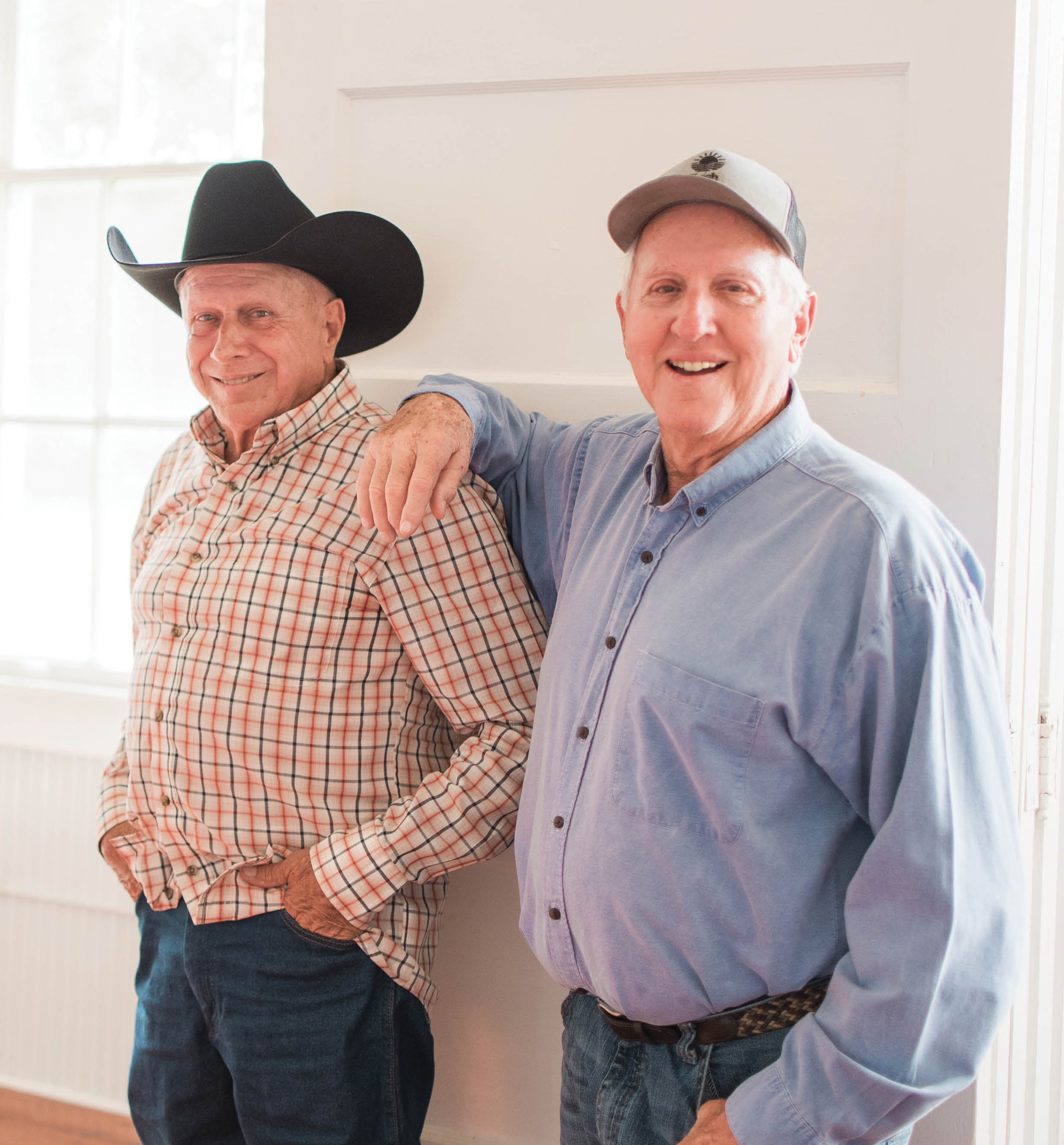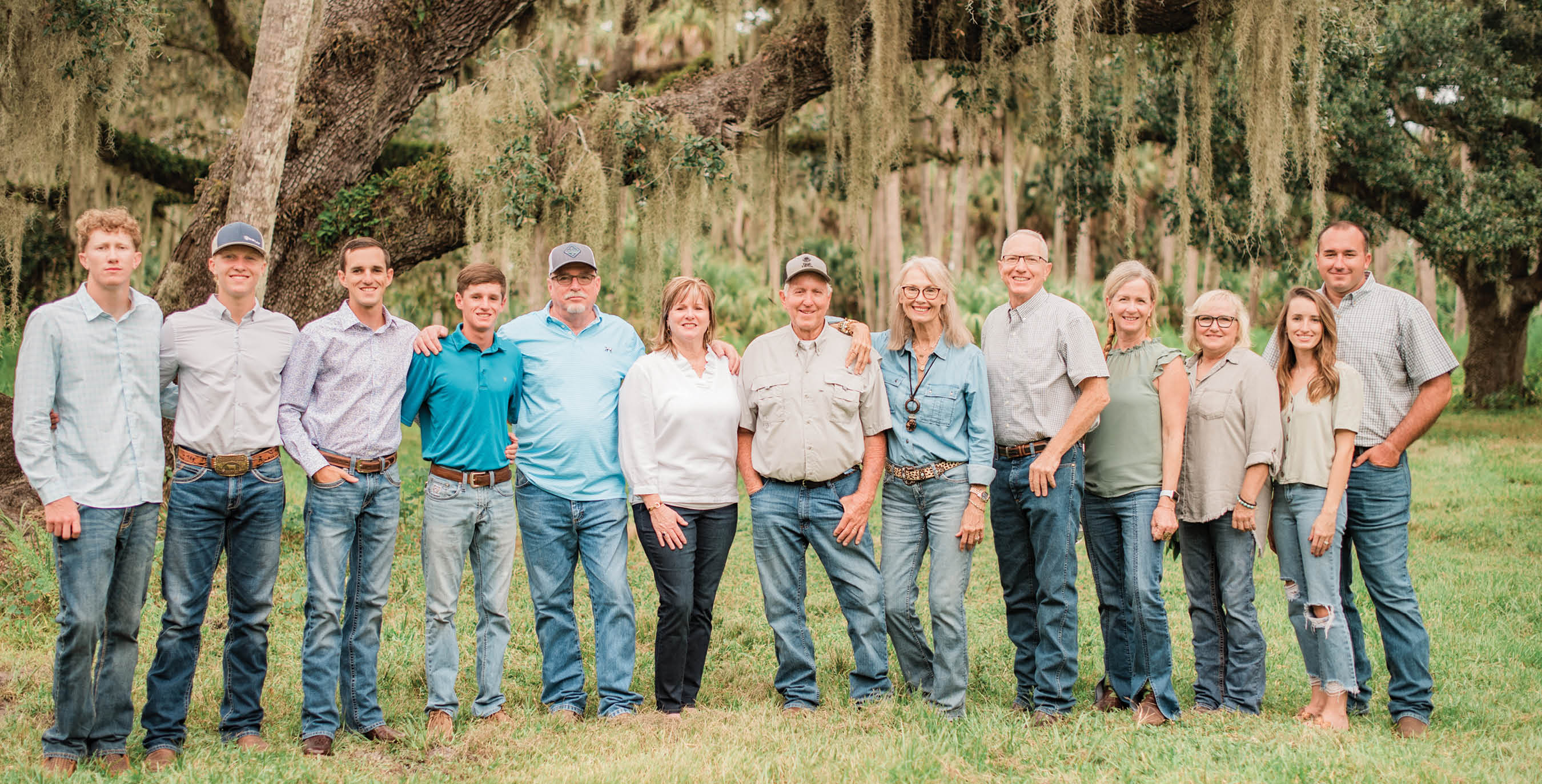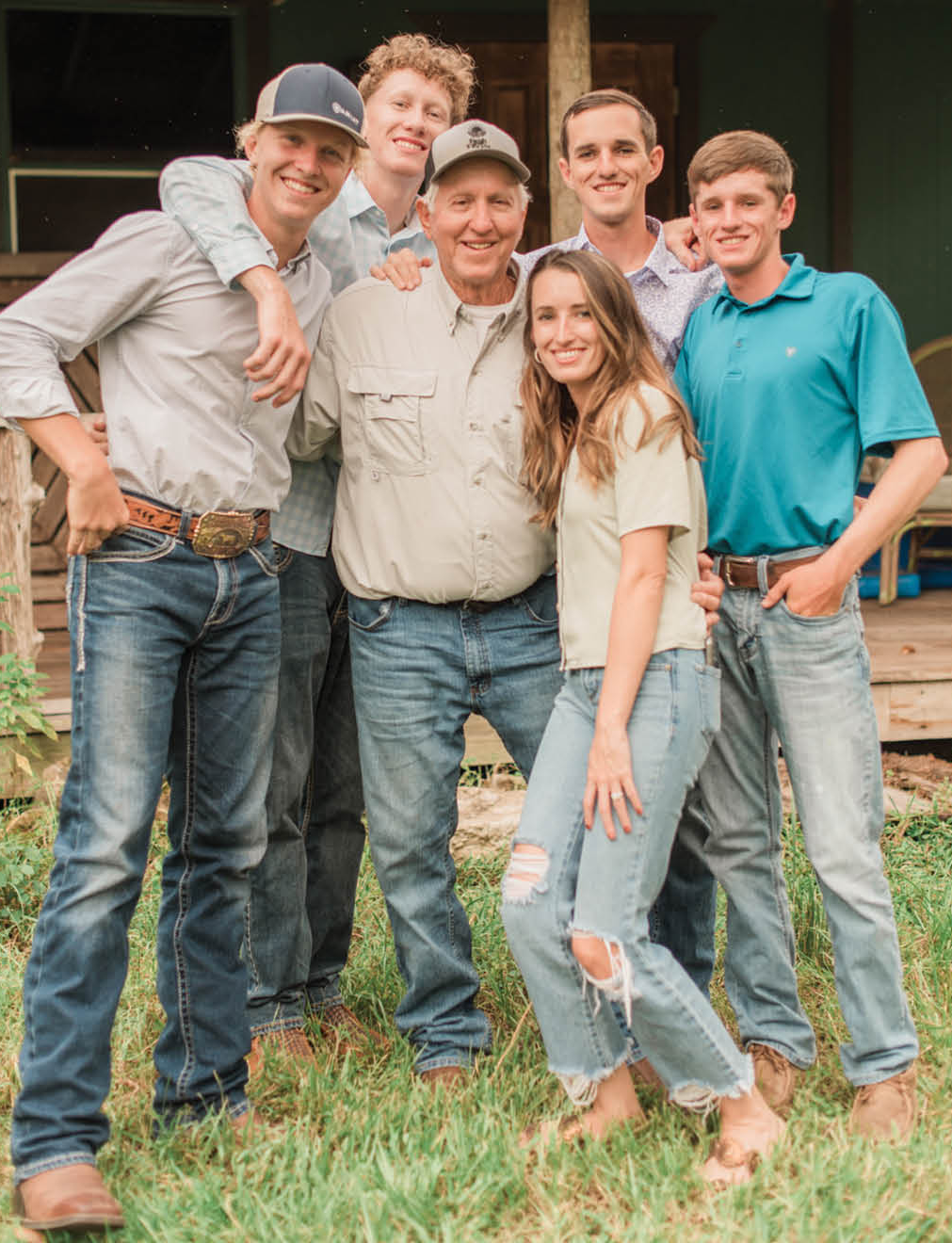Deep Roots in Florida Soil
By Ladonna Paedae Rodriguez
Photography by Lisa Taylor Hall
Tracing the lineage of one’s family to the 1900s can be challenging. Discovering and verifying those roots to the 1700s is remarkable. Pioneer Lorida family, the Waldrons, know their history well. They are settlers, great story-tellers, history buffs, and perhaps, legend-creators.
This is the multi-generational historical “map” of the Waldron family and their far-reaching family tree, the canopy of which covers generations. It traces back to when Florida was composed of territories split into east and west, and before that to their Georgia home, to being early settlers and township developers in Arcadia, Florida, finally landing today in Lorida, Florida.

Say the word, “pioneer,” and the Waldron family fits snugly into that mold. Withstanding the hardships of sourcing basic needs such as food, water and shelter was challenging to say the least for these early settlers, but the Waldrons came through by sheer grit and determination—not unscathed, but they came through, nevertheless—and they multiplied and were fruitful.
In the early 1800s, Waldron pioneers settled in Colombia County, Florida. David Elias Waldron, Sr., born in the 1750s, served in the Civil War and eventually settled in Manatee County, which at the time encompassed multiple current-day counties, including Hardee and Highlands). He set up camp in a hammock on Fisheating Creek, in the area then known as Indian Prairie (now called Palmdale). He married Mary Ann Thompson, and together they had six children, one of whom was David Elias Waldron, Jr. (born in 1847). Eventually the family built a log cabin on the site.
As an adult, David Elias Waldron, Jr. set up a home in Venus on the upper Fisheating Creek. David and his wife Martha Jane (Driggers) were married in 1871 and eventually became parents to 10 children, one of whom was James Alva “Alvie” Waldron, born in Brownville, Florida, on November 4, 1876. James Alva and Doshie (Layport) Waldron were married in Fort Basinger, Florida on April 8, 1906, and were the parents of Lester (Bud) Waldron as well as at least eight other children. Alvie lived a long life, passing away in 1976 at 99 years old. He is buried in Okeechobee, Florida. David, Sr. died at Fort Bassinger on November 8, 1908 and is buried in a small cemetery near Highway 98.
Lester (Bud) and spouse Rena Tomlinson Waldron were both born in the 1920s and had four children: Ronnie, Loyle, Patricia Ann and Jim (now deceased), which brings us to the current-day Waldron family members who are some of the very “deep roots” of Lorida, Florida. Rena was very active in her close-knit community and in fact was a charter member of the Lorida Baptist Church. Church life was intertwined with social life for the Waldrons and Tomlinsons as well as for most of the people they knew. Pioneer Lorida families such as Boney, Rimes, Ashton, MontsDeOca, and McClelland all attended church alongside the Waldrons.
The Waldron children attended the two-room Lorida schoolhouse, as did lots of cousins and friends. When you live in a very, very small town, your siblings and cousins become your best friends and your partners in mischief, and for the Waldrons it was no different. After school, the clan found themselves participating in local rodeos, fishing and hunting, and helping out with family chores.
In 1952, those chores increased significantly as Bud became an egg farmer. On a 10-acre tract of land in Lorida, the Redwine family, who were experienced egg farmers, took young Bud Waldron under-wing, teaching him all things egg farming. Young sons, Ronnie and Loyle, along with their mother and other friends, collected the eggs in wire baskets and would then tote them by Jeep to the egg room. There more family and employees would wash, weigh and grade the eggs by hand. Bud, Rena and her sister-in-law Reba began hauling chickens back to the farm for the Redwines from another state. One thing led to another, and soon the Waldrons started Sunny Land Egg Farm, which was located in Lorida on Highway 98, close to the then-Red Lantern.
The family of six (Bud, Rena, Ronnie, Loyle, Jim, and Patricia Ann) lived primitively in a two-bedroom, one bath cracker house without air conditioning behind the brick building which housed the eggs. They began with 10,000 laying hens, which required the family to be up before daylight to perform the tasks that would ensure a plenitude of good, healthy eggs. The chicken feed was trucked to Sunny Land from Tampa in large, colorfully decorated burlap feed-sacks. Many Lorida children during those days wore clothing created from sacks that were purchased from Sunny Land for twenty-five cents each.
Realizing that he did not want to continue in the egg producing business that his father had decided to give to him and brother Loyle, Ronnie began buying boxes of 30-dozen eggs and selling them directly to Lorida residents, as well as to restaurants, jails and schools, and to the locally famous hotels, The Kenilworth Lodge and The Harder Hall Resort. True to his Waldron roots, found other ways to support his family. First, he began buying and selling farm equipment, then entering the custom butchering/cut-and-wrap business. As fate would have it, a truck full of cattle wrecked near the egg farm, part of which was by then dedicated to the butchering business. Seventeen cows were killed in the wreck, and, seeing an opportunity to not let the loss of the cattle be for naught, Ronnie and Bud fetched their bulldozer, loaded them up and butchered them well into the wee hours, eventually selling them to local, happy beef-eating customers.
Loyle recalled going oystering with his father Bud, and grandfather “Alvie” off the coast of Anna Maria Island. As Bud and Loyle worked feverishly pulling in the oysters, the elder statesman Alvie sat in the back of their boat, popping and slurping up those oysters, much to the chagrin of the other Waldron “boys.”
In the 1960s and ‘70s, Ronnie’s brother Loyle trapped and sold catfish. He built traps out of chicken wire into which he would put soybean meal bait. He’d toss them into Lake Istokpoga, haul in and skin the fruits of his labor, and take them to sell at market in Okeechobee.
A common thread among the Waldrons is self-sufficiency, dedication and persistence, both in work and in life. As the Waldron family grows in numbers, so also grows their dedication to preserving the family legacy and heritage.
Ronnie and Loyle, Patricia and Jim added to the family tree with their own children. Ronnie Waldron has two sons, Keatley and Mike, and a daughter, Lea (their mother is Angela Dixon Wingo). They are quick to reminisce about the family’s history and colorful past with their own children. Keatley and wife Kim have three children: Keat, Kash and Kase. Mike’s four children with Karen are Emily Grace, Clayton, Ryan and Will. Lea’s son is Austin Maddox. Loyle’s two daughters are Debbie and Denise, and their mother is Linda. Patricia’s children with James Paul are Rhonda and Suzanne. With second husband Jim Mero, they have a son, Michael. Jim has a daughter, Stacy, whose mother is Gail.
The tight-knit Waldron family is humble but proud of their roots, hard-working and fun-loving. As children are added into the family, they learn about how the Waldrons, with a hardy pioneer spirit and cowboy determination, created a legacy that will continue for generations to come. That broad tree keeps growing mighty and strong with each new generation.










